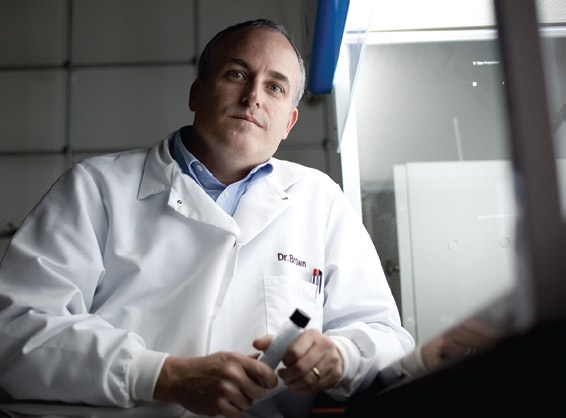As an aerospace engineer with McDonnell Douglas two decades ago, Derick Brown decided to take a few classes in environmental engineering at the University of California-Irvine. He fell for the field and the way it brought together chemistry, biology, hydrology and other disciplines.
Brown earned a Ph.D. at Princeton and joined Lehigh’s department of civil and environmental engineering, where he is now Class of 1961 Associate Professor. He received a CAREER Award from NSF and is studying, among other things, the increase in metabolic activity that a bacteria cell undergoes when it adheres to a solid surface.
“Wherever bacteria interact with solid surfaces, metabolic activity can vary,” says Brown, “even on clean surfaces like the glass we use in our lab. We have found that when bacteria adhere to a surface, the cell’s adenosine triphosphate (ATP) level can change dramatically. ATP is the main energy carrier for living organisms, and we want to know how its concentration is affected by the process of adhesion.”
Brown hypothesizes that there is a link between ATP formation and the variation in a cell’s surface charge and pH as it approaches another surface. He believes the adhesion process itself, rather than the presence of nutrients or growth substrate at the solid surface, is what affects ATP formation.
“Bacteria don’t have eyes or fingertips, so how do they know when they hit a surface?” Brown asks. “I want to understand what triggers that change in ATP. What tells the cells they’ve hit something? Then perhaps we can utilize ATP to either encourage or inhibit cells from colonizing certain surfaces.”
This complex link between physiochemical and bio-energetic processes fascinates Brown. If engineers can tailor the properties of a solid surface, perhaps they can control ATP formation. The right surface coating could deplete cellular ATP and kill bacteria adhering to a water pipeline. Or it could increase cellular ATP and stimulate bacteria to degrade toxic chemicals in polluted water.
Brown also studies the movement of bacteria through soils, which is of interest to scientists tracking the spread of pathogens in groundwater or homebuilders seeking a safe distance from a septic system to a water well.
“People often think of me as a microbiologist, but I’m not. I am an engineer who happens to be studying microbiology,” he says, “and I love using math to describe microbiological processes.”


